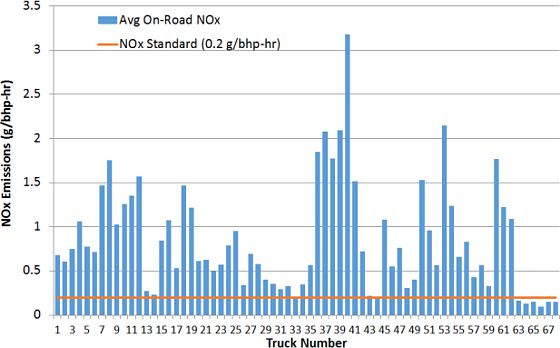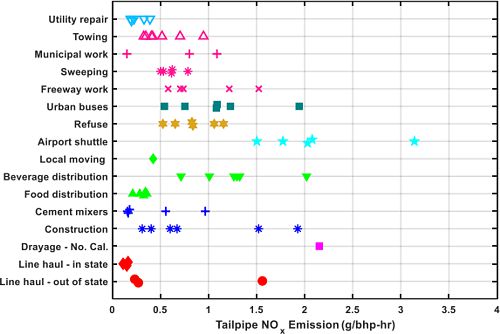Conference report: SAE On-Board Diagnostics Symposium
30 March 2018
The 2018 SAE On-Board Diagnostics Symposium—Europe was held on 5-7 March in Barcelona, Spain. The program included 25 presentations in a single track, as well as four breakout discussion sessions in two parallel tracks. Presentations covered regulatory developments and a wide array of on-board diagnostics (OBD) issues in light- and heavy-duty applications. The conference was attended by about 150 participants. After the conference, participants could take part in a tour of the SEAT Martorell Manufacturing Plant—the headquarters of the Volkswagen SEAT brand and the manufacturing site of the Audi Q3.
Please log in to view the full version of this article (subscription required).
The technical program started with three presentations that provided an introduction to the OBD Workshop, which was held after the conference, on March 8th. OBD requirements were first introduced in California, and to this day the California OBD program plays a central role in the United States as well as in a number of OBD programs worldwide. The history of OBD dates back to the OBD I program that became applicable to all 1988 and later vehicles [J. Ellis, CARB]. The OBD II requirements were adopted in 1989 and were applicable to MY 1994/1996 vehicles. In heavy-duty engines, the EMD (engine manufacturer diagnostics) regulation adopted in 2004 required monitoring of EGR and PM filters. The current HD OBD program was adopted in 2005, started with the 2010 model year, and was fully implemented in 2016 engines.
Following California, OBD programs have been adopted by a number of countries worldwide [J. Potter, GM]. European OBD dates back to the Euro 3/4 stage, with significant changes since Euro 5/6. OBD requirements also exist in Korea, China, and a growing number of other jurisdictions. Most of the programs are based on the California OBD, but country-specific OBD requirements are also possible (e.g., India, Japan, and Brazil).
The purpose of the on-board diagnostic system is to detect malfunctions of the vehicle’s emission control system and—when a malfunction is detected—to illuminate the malfunction indicator light (MIL) on the dashboard. The system stores a fault code and other data to help the service technician repair the vehicle. The OBD system is comprised of sensors, actuators, controllers, software algorithms and calibrations. The regulations are complex and include a number of standardized requirements, such as production vehicle evaluation (PVE) testing that involves a verification of MIL and fault codes, as well as in-use monitoring performance ratios, IUMPR, which track how frequently monitors run on the road.
OBD relies on monitoring of emission related components rather than on direct emission measurement. For example, three-way catalysts are typically monitored using two oxygen sensors, one upstream and one downstream, to detect the deterioration of the catalyst oxygen storage capacity. Because of this approach, the OBD requirements are a ‘moving target’—they are regularly updated as the engine and emission technology develops, which makes it challenging for the manufacturers. Recognizing the challenges with OBD compliance, CARB allows certification of vehicles with minor ODB issues, referred to as ‘deficiencies’. However, California sales volumes are subject to fines on per-vehicle basis for having 3 or more deficiencies: $50 per deficiency for major monitors (e.g., EGR), and $25 per deficiency for minor monitors (e.g., temperature sensor). Total fines are limited to $500 per vehicle.
A group of volunteer industry experts compiled an extensive listing of acronyms referenced in various OBD standards and regulations [M. Laleman, Ford]. The listing, intended as a guidance for industry professionals, was distributed with the conference materials.
Regulatory Developments. A number of changes are about to be introduced to the California HD OBD, with a regulatory proposal scheduled for late spring 2018 [T. Montes, CARB]. The proposal will bring changes to the monitoring requirements, manufacturer self-testing, and cold-start monitoring. An important part of the new HD OBD package will be a NOx and CO2 tracking proposal. Real-world NOx from trucks remains a big concern, as demonstrated by a recent CARB-commissioned study conducted by UC Riverside. In the project, OBD data was logged from 68 trucks over one month or longer of activity. The tested 2010-2015 trucks were powered by engines from four manufacturers, and operated in a variety of applications and duty cycles, as shown in Figure 2. A large proportion of trucks had tailpipe NOx emission levels above the 0.2 g/bhp-hr FTP standard or the ~0.3 g.bhp-hr FEL limits, which suggests that a proportion of the engines might have been out of compliance with emission standards.


The root cause of the high NOx emissions was low SCR efficiency. Many trucks showed poor SCR conversion even at temperatures above 250°C. In 21 trucks, the NOx conversion was lower than 70%. The SCR performance varied substantially depending on engine make. The upcoming OBD NOx tracking proposal introduces a simple method for estimating NOx mass, based on the tailpipe NOx sensor output and exhaust gas mass flow. There are no compliance requirements; rather, the NOx tracking is intended to provide feedback to identify outliers. Similarly, the CO2 tracking proposal does not add any malfunction criteria, but is intended for use in emission inventory and to assess the efficacy of the Phase 2 GHG emission regulation. Diesel fuel consumption is used as a surrogate for CO2 emissions, and no additional sensors or hardware are required.
Sensors and Monitors. Future regulations will require the determination of CO2 emissions under real driving conditions. CO2 monitoring can be performed by the measurement of fuel consumption and the battery charge in hybrid/electric vehicles. However, due to the multitude of factors that affect CO2 emissions, to compare the real driving emissions to a certified CO2 value is a non-trivial task [G. Di Martino, APS-Technology]. A CO2 monitor was developed that considered a number of vehicle parameters and operational factors. A calculation approach for electric vehicles was also presented.
Gasoline particulate filters (GPF) are being introduced in Europe and China to control particle number emissions. The Chinese OBD requirements include GPF removal detection. The monitoring of GPF for removal can be achieved through pressure or temperature based methods [H. Jessen, Bosch]. In the pressure based method, a differential pressure sensor (-20...80 kPa, tolerance 0.4 kPa) is used. The method also monitors the hoses connecting the sensor. In the temperature based method, temperature sensors are positioned close to the GPF (in the cone).
The introduction of smart sensors and devices may be a source of undesired interactions with the engine control module (ECM) and diagnostic compliance risks. General Motors [I. Anilovich] identified a number of issues with managing the interface between a resistive PM sensor used for monitoring the DPF efficiency and the ECM. The PM sensor utilizes interdigital collecting electrodes, and includes its own electronic controller. Several issues were identified when working with the ECM, such as lack of actionable authority (sensor having authority over the ECM) and lack of understanding of the internal PM sensor logic. Correctly identifying and managing the interaction between the PM sensor and the ECM has resulted in GM having to modify its development process for software and calibration.
Diesel exhaust fluid (DEF) injector performance—which must be monitored in OBD II systems—provides a number of monitoring challenges in several areas including reductant delivery performance (RDP) and stuck injector detection [S. Funk, GM]. RDP may be monitored based on the DEF pump pressure difference under ‘flow’ and ‘no-flow’ conditions. One of the challenges are gaseous bubbles in the urea tank, which may cause an unexpected pressure drop triggering a false failure. Stuck DEF injector monitoring has also proved to be difficult. The DEF injector coil temperature is monitored to protect the injector hardware. The DEF injector calculates the coil temperature based on measured coil resistance. Fault detection is based on the temperature difference between the coil and a reference temperature. A stuck DEF injector can be healed by extended exposure to injector coil temperature above 170°C to melt urea.
* * *
The next SAE On-Board Diagnostics Symposium will be held on September 11-13, 2018 in Indianapolis, IN, United States, followed by another European event on March 12-14, 2019 in Stuttgart, Germany.
Conference website: www.obd18.org